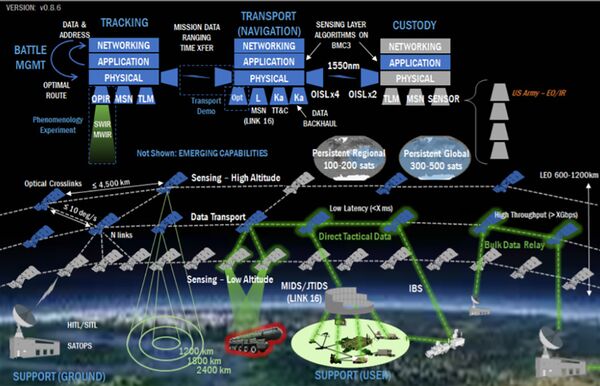
An informational graphic by the US Department of Defense's Space Development Agency, detailing the multilayer National Space Defense Architecture. (US Department of Defense)
The prototype low Earth orbit (LEO) satellites designed for the Tracking Layer of the Space Development Agency's (SDA's) Proliferated Warfighter Space Architecture (PWSA) have cleared the critical design review (CDR), marking a key milestone for the architecture's ongoing development.
The CDR clearance was for the design of the prototype space vehicle and datalink capability for the Tranche 1 Transport Layer (T1TL) of the PWSA, developed by a Northrop Grumman-Airbus US Space & Defense team. Northop Grumman's decision to base its T1TL design on a mix of the company's military-centric intelligence, surveillance and reconnaissance (ISR) capabilities along with those derived from its “commercial marketplace partnerships” ultimately aided in the prototype receiving CDR approval, said Blake Bullock, the company's vice-president for communication systems and strategic space systems.
That approach will not only benefit the T1TL development as the technology continues to mature, but could also act as a template for the company towards “delivering a credible capability” to support future operational requirements for the PWSA, Bullock said in an April statement. The Transport Layer of the PWSA is designed to enable datalink transmission to extend the current LEO satellite communications (satcom) constellations from line-of-sight ranges into satcom-type ranges and reach. It is one of several layers that agency officials are planning to support the new LEO satellite architecture.
The CDR approval of the T1TL system came several months after the Transport Layer architecture cleared the preliminary design review, Northrop Grumman officials said in the April statement.
Looking to read the full article?
Gain unlimited access to Janes news and more...



